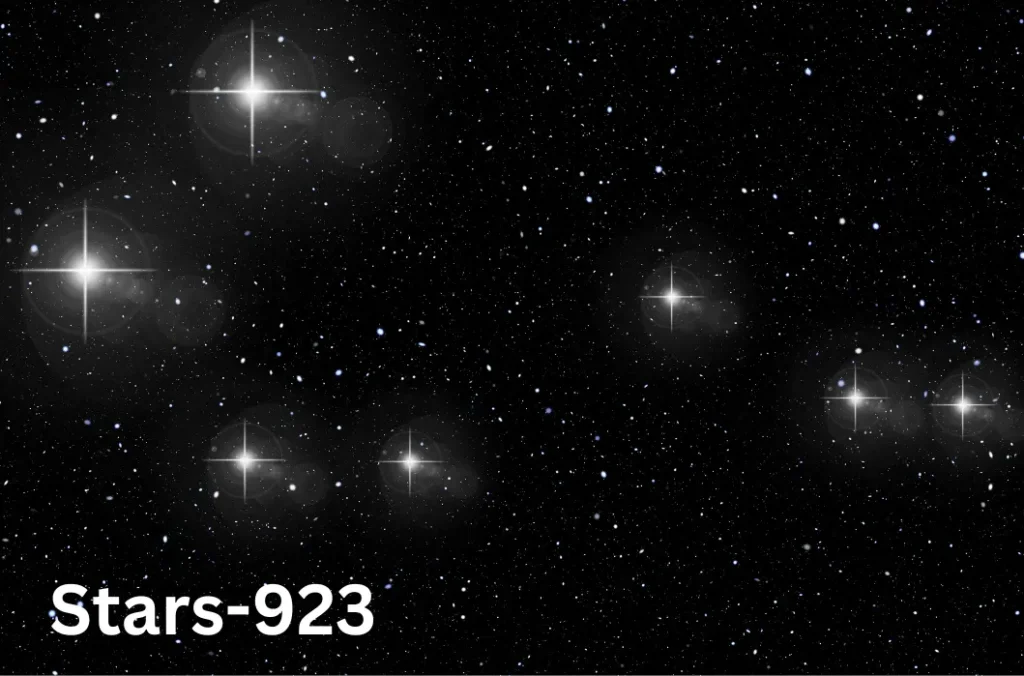Introduction: A New Star or Cosmic Speculation?
The night sky has long intrigued humanity, filled with stars that shine like distant gems. Among these is the enigmatic Stars-923 – an object that has sparked curiosity, debate, and fascination. Though it remains speculative, the buzz around it opens the door to scientific discussion and mystical interpretation. This article will explore what Stars-923 could represent, the scientific possibilities, cultural beliefs surrounding stars, and the value of celestial discoveries.
What is Stars-923?
Stars-923, as of now, is not officially cataloged by leading astronomical databases like NASA or ESA. However, its mysterious mention online has prompted discussions among star enthusiasts. Is it a rare celestial object? A brown dwarf, a variable star, or even a distant quasar?
- Speculative Status: No confirmed scientific data yet supports the existence of Stars-923.
- Astronomical Interest: Theories suggest it could belong to an unusual class of celestial phenomena.
Transitional Phrase: With speculation still swirling, let’s explore what scientific possibilities may align with Stars-923.
Scientific Possibilities
Hypothetical Nature of Stars-923
Though speculative, astronomers hypothesize that Stars-923 could fit into one of these categories:
Brown Dwarf:
- A failed star that lacks sufficient mass to ignite nuclear fusion.
- Example: WISE 0855-0714, one of the coldest known brown dwarfs.

Variable Star:
- Stars that change in brightness over time.
- Example: Cepheid variables play a key role in measuring cosmic distances.
Quasar:
- A powerful energy source powered by a black hole at the center of a galaxy.
- Example: 3C 273, the first quasar ever identified.
Stellar Evolution Explained Simply
Stars go through multiple stages in their lifecycles, from birth to eventual death. Understanding these stages helps place potential objects like Stars-923 into a broader cosmic framework. Also read WAAA-117
- Nebula: The birthplace of stars, formed from gas and dust.
- Main Sequence: A star’s stable phase, where hydrogen fusion occurs.
- Red Giant/Supergiant: When stars expand in size, burning heavier elements.
- End of Life: Depending on mass, stars can become white dwarfs, neutron stars, or black holes.
Simple Analogy: Think of stars like candles—they burn bright for a time and eventually fade or explode into a spectacular display (supernova).
Transitional Phrase: Now that we’ve explored the science behind stars, let’s dive into their cultural and mystical significance.
Mystical and Cultural Interpretations of Stars
Throughout history, stars have been symbols of guidance, hope, and destiny. From ancient navigators using stars to find their way to astrologers believing stars affect human fate, celestial bodies carry deep meaning.
- Cultural Belief: Some people believe that the appearance of a rare star marks a significant life event.
- Astrological Significance: Astrologers might view Stars-923 as a sign of cosmic transformation or new beginnings.
Quote:
“Stars remind us that even in the darkest times, there is light.”
Expert Opinions and Analysis
Experts from the field of astronomy, while speculative about Stars-923, emphasize the importance of exploring new objects. Whether this object is real or simply a product of speculation, such discussions can spark scientific curiosity.
Hypothetical Expert Opinion:
“Every unknown object gives us the chance to better understand the universe’s complexity and surprises.” — Dr. Jane Foster, Astrophysicist.
Summary Table: Key Facts about Stars-923
| Aspect | Details |
|---|---|
| Speculative Nature | No official confirmation of existence yet |
| Possible Classification | Brown dwarf, variable star, or quasar |
| Cultural Significance | Symbol of cosmic change or new beginnings |
| Scientific Relevance | Potentially detectable by telescopes like JWST |
| Importance for Astronomy | Sparks curiosity and further exploration |
Conclusion
Stars-923 is a fascinating topic, blending science and mystery. Whether this object turns out to be a groundbreaking discovery or remains speculative, the journey of exploring it offers insight into how we understand the universe. Even if Stars-923 is not officially confirmed, the discussion itself ignites curiosity, a key driver of scientific exploration.
FAQ`s
What is Stars-923?
Stars-923 is a speculative celestial body that has sparked interest among astronomers and enthusiasts. However, no official data or confirmation exists from recognized astronomical institutions like NASA or ESA.
Is Stars-923 a real star or discovery?
As of now, Stars-923 remains unverified, with no official mention in scientific databases or star catalogs. It may represent a hypothetical object or a subject of online speculation.
What are the possible classifications for Stars-923?
Theories suggest that Stars-923 could belong to one of several celestial categories, including a brown dwarf, a variable star, or even a quasar.
How can I stay updated on Stars-923?
To stay informed about any developments, follow updates from NASA, ESA, and major observatories, or keep an eye on reputable astronomy journals and websites.

